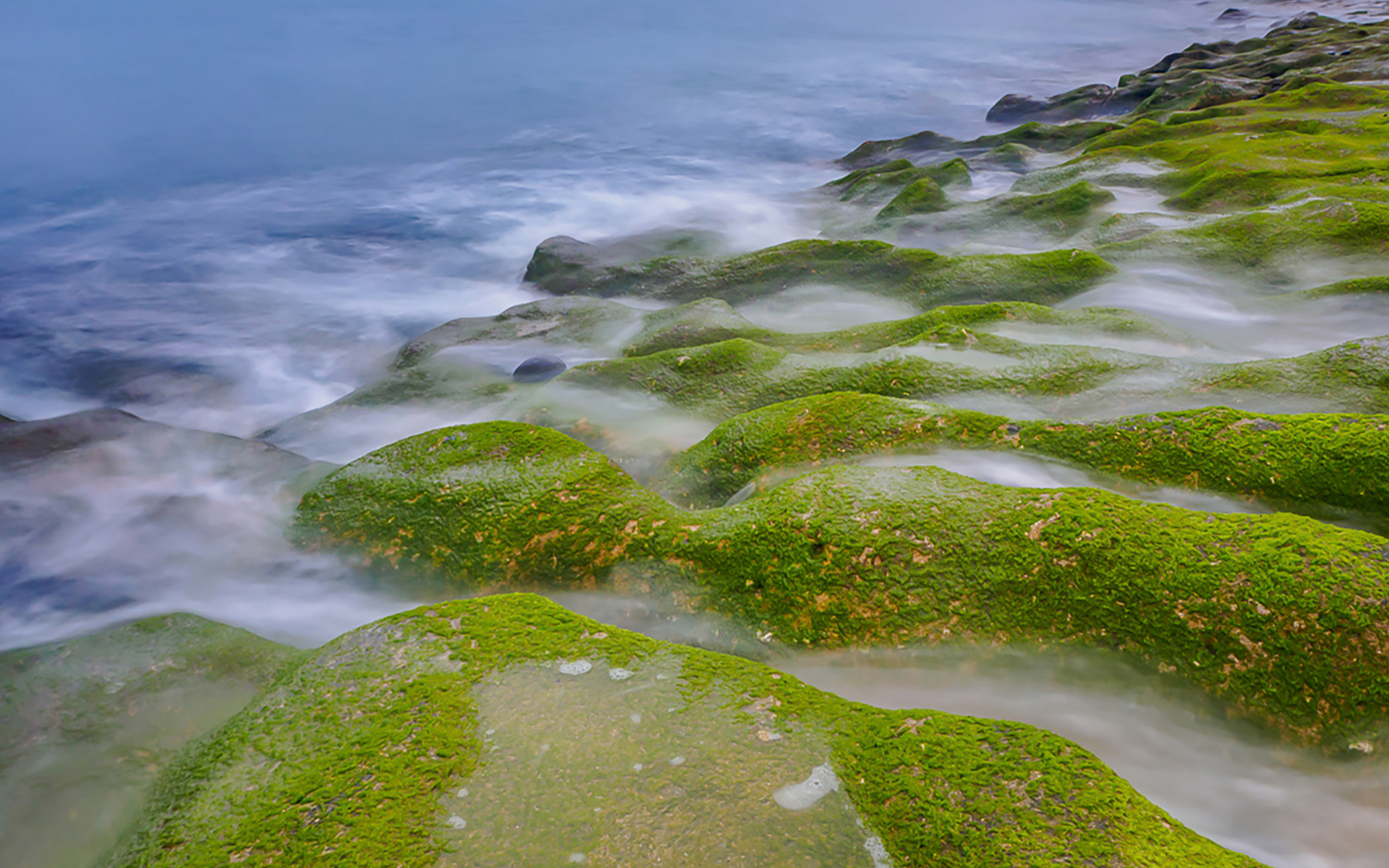| 計畫期限 | 2012-12-31 ~ 2013-12-30 |
|---|---|
| 研究名稱 | 東沙環礁全新世地質演化研究 |
| 受託單位 | 台灣珊瑚礁學會 |
| 計畫主持人 | 宮守業 |
| 協同主持人 | 王士偉 |
| 參與計畫人員 | 李韋廷 |
| 關鍵詞 | 東沙環礁、東沙島、國家公園、全新世、南中國海 |
| 摘要 | 一、研究緣起 東沙環礁位於廣東外海,高出周圍海床約400公尺,直徑約25公里,面積約500平方公里。行政院於民國95年12月19日正式核定成立東沙環礁國家公園,為我國第一座海洋型國家公園。雖然東沙環礁極具生態保育及學術研究的價值,但目前對東沙的珊瑚礁地質了解仍然十分有限。 二、研究方法 為了進一步瞭解東沙環礁及東沙島的環境與地質作用的變化,本計劃以地質鑽探的方式,分別取得東沙島之全新世地層岩芯標本3孔以及東沙環礁礁台岩芯1孔、分析岩心組成,並進行碳十四或鈾釷同位素定年,以建立東沙環礁及東沙島自全新世之地層紀錄。 三、 研究成果 1. 本計劃執行東沙島上地質鑽探岩芯3孔。DS-2位於東沙島西端,岩芯長度分別為22公尺,於14.9公尺鑽入更新世。DS-3位於接近東沙島東半部的中央,岩芯長度為20公尺,於17.25公尺鑽入更新世。DS-4位於東沙島東端,岩芯長度為23.3公尺,於20.6公尺鑽入更新世。本計劃執行東沙環礁北側礁台鑽探岩芯1孔,岩芯長度為21.2公尺,於12.3公尺鑽入更新世。 2. 本計劃執行東沙岩芯描述、XRD礦物分析19件,其中3件已再結晶,16件為保存原始礦物組成之珊瑚化石。 3. 本計劃執行東沙島上岩芯中全新世珊瑚化石之AMS碳十四定年12件。東沙島上最近之年代為 785± 95 cal BP,最早之年代為 8150± 130 cal BP。環礁上最近之年代為6430± 90 cal BP,最早之年代為 7915± 85 cal BP。 4. 東沙島形成方式完全為沈積物堆積而成的沙洲島,並非由珊瑚礁構成的基底。東沙島的形成在礁台內側(潟湖側),並非因為該處基底之水深較淺,而是該處沈積物堆積較快。礁台堆積方式大致為上積(aggradation),並無由外向內或由內向外的前積(progradation)現象。 5. 東沙島更新世古地形面由西向東下降,由東沙島西側礁台邊緣的-13.6mMSL逐漸下降到東沙島東端的-17.1 mMSL。這個現象符合Purdy(1974)提出的假設,全新世環礁的基底在更新世時期受喀斯特作用影響,形成外緣高於內側的環狀古地形。 6.DS-5位於東沙環礁礁台北側邊緣之礁頂(reef crest),但並未鑽遇珊瑚礁架構,該地之礁台仍為碎屑堆積所形成。珊瑚礁架構可能在更為外緣處。由DS-5岩芯中最老的珊瑚年代推估,礁台北側珊瑚礁大約在八千年前已經開始形成,略早於礁台西側邊緣最早的年代7339±40 yr(宮守業等,2012)。 7.不論在資料比較充分的礁台西側,或資料比較不充分的礁台北側,礁後堆積在過去大約八千年內,形成了寬2000-3000公尺的礁台,此沈積速率可能為全球環礁之冠。 四、建議 1. 海洋國家公園以往推動的調查或研究計畫,對東沙島附近交通相對便利的範圍已經有很好的成果,但是對於礁台的認識相對較少,建議今後的調查、研究的方向應在以往的基礎上擴大範圍,往環礁礁台發展。 2. 海洋國家公園以往推動的調查或研究計畫,對東沙環礁的生物學、生態學和海洋學,已經有很好的成果,但是對於環礁地質的認識相對較少,建議今後除繼續生物學、生態學和海洋學的研究、調查之外,應加強推動珊瑚礁地質的相關研究。 3. 為了集中資源、統合調查、研究成果,建議海洋國家公園應至少每兩年舉行一次東沙研究成果發表會,促進赴東沙調查、研究的學者之間的交流合作。 1. Purpose The Dongsha Atoll is located on the Dongsha Rise that is outside of continental shelf offshore Canton. The atoll stands about 400 meters above the surrounding sea floor with a diameter of about 25 km and area of 500 km2. The Executive Yuan of ROC officially approved on December 19, 2006 the establishment of the Dongsha Atoll Marine National Park, the first marine national park in our country. Although the park has tremendous values in ecological conservation and academic research, our understanding about reef geology of Dongsha is very limited due to its remote ocality. 2. Methods In order to understand the geological processes and environmental changes, this project plans to drill 3 cores on the Dongsha Island and 1 cores on the reef flat of atoll through he Holocene sequence. The Holocene stratigraphic records of the atoll and the island will be established by analyzing the cores and dating fossil corals or mollusks by C14 or U-Th isotopes. 3. Results (1) This project drilled 3 cores on the Dongsha Island. DS-2 is located at the west end, 22 m in length, and reaches the Pleistocene at 14.9 m. DS-3 is located near the center of the eastern part of the island, 20 m in length, and drills into the Pleistocene at 17.25 m. DS-4 is located at the eastern end, 23.3 m in length, and meets the Pleistocene at 20.6 m. It also drilled 1 core near the margin of the northern reef flat, 21.2 m in length, and reaches the Pleistocene at 12.3 m. (2) The cores were described; 19 fossil corals were analyzed by XRD for mineral identification, 3 were crystallized and 16 were pristine. (3) 12 corals were dated by AMS C14 method by Beta Lab. The youngest age at the island is 785± 95 cal yrBP and the oldest 8150± 130 cal yrBP; at the northern reef flat, youngest age is 6430± 90 cal yrBP and the oldest 7915± 85 cal yrBP. (4) The Dongsha Island is a sand cay that formed by deposition entirely. There is no Holocene coral reef underneath. The island formed on the inner (lagoon) side of the reef flat not because that’s where the water depth is shallower, but the deposition rate is faster. The build-up of reef flat is mainly aggradational. There was no sign of progradation, either from lagoon outward nor from ocean inward. (5) The top surface of the underlying Pleistocene limestone descends from -13.6 mMSL on the outer (ocean) to -17.1 mMSL on the inner (lagoon) side. The topography supports the model of Purdy (1974), in which he proposed Holocene atolls developed on antecedent platform of Pleistocene karsts. (6)DS-5 is located at reef crest on the northern reef flat of Dongsha Atoll, but did not recored reef framework in situ. The core consists of detrital sediments entirely. Reef framework may occur further seaward of the site. The coral reef of the northern side is estimated to start about 8 kyr ago based on the the oldest coral in DS-5, which is slightly earlier than the oldest age 7339±40 yr of DS-1 (Gong et al., 2012). (7)Either on the western atoll where there are more data, or on the northern atoll where there is less data, backreef sedimentation has built a reef flat of 2000-3000 me in width. Such sedimentation rate may be the highest among atolls worldwide. 4.Suggestions (1) Most previous projects funded by the National Marine Park have had good results for the areas near the Dongsha Island, but few about the reef rim. On the basis of previous works, more efforts should be placed on the reef front and reef flat to expand out knowledge about Dongsha atoll. (2) Most previous projects funded by the National Marine Park are bout biology, ecology or oceanography. Relatively speaking, we know little about the geology of the atoll. While continue the studies of biology, ecology or oceanography, more efforts should be placed on the reef geology. (3) To maximize the resources and coordinate results of research and survey, National Marine Park may host a symposium of Dongsha research at least once every two years. Such symposium will promote the communication and collaboration between scientists who are interested in Dongsha. |
102年,全新世,東沙島,東沙環礁,南中國海,國家公園

